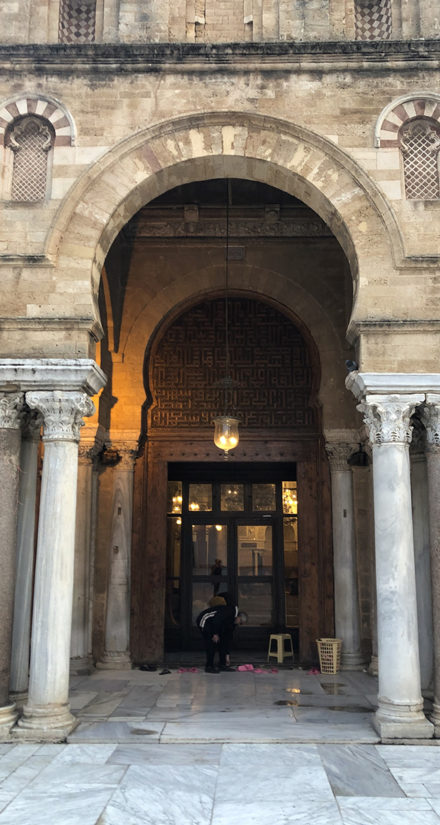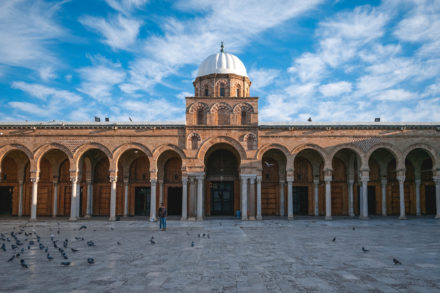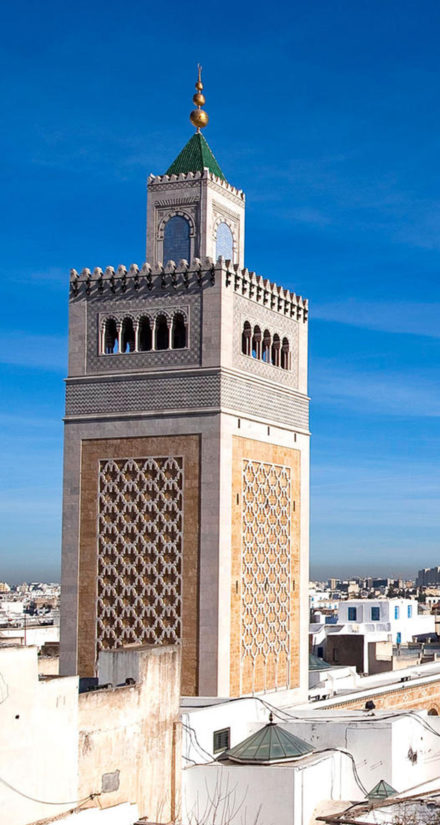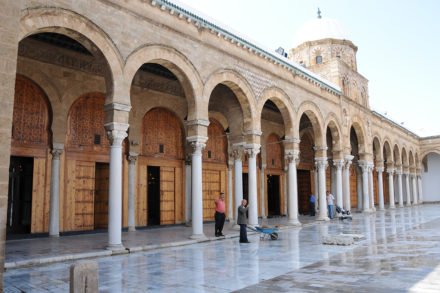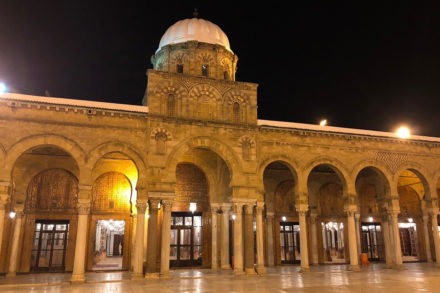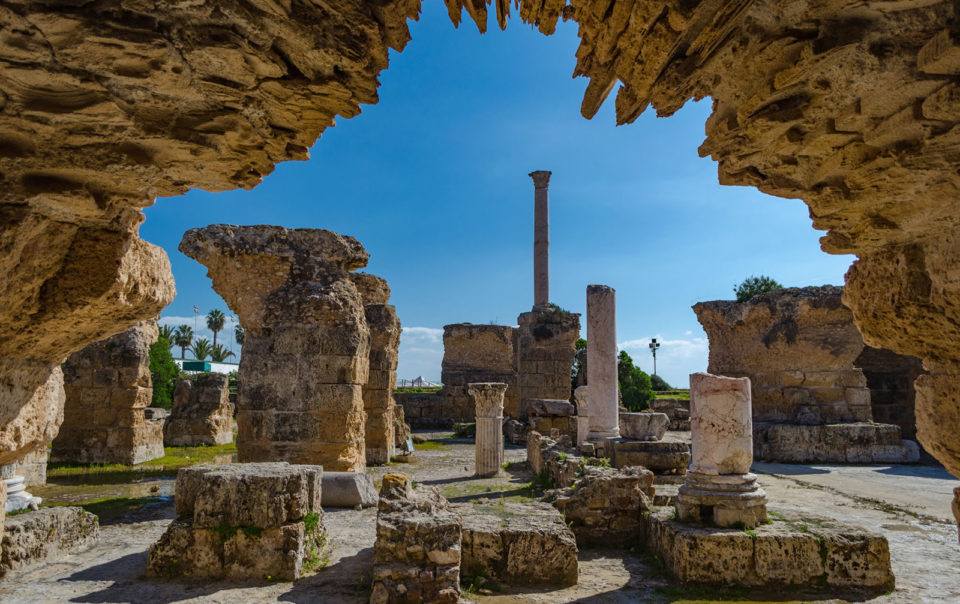Zitouna mosque
The Zitouna, heart of the Medina
Erected on an area of some 5,000 sqm and with nine entrances, the Zitouna (the olive) is the oldest and largest sanctuary in Tunis. It has 184 ancient columns, mainly from the site of Carthage.
The Zitouna dates back to governor Abdallah Ibn el-Habhab (732 A.D.), during the Muslim conquest of the Maghreb, it was built on the remains of a Christian basilica, which confirms the legend of the presence of the tomb of “Sainte Olive” (martyred under Hadrian in 138) on the site of the mosque.
Rebuilt in the mid-9th century, it has undergone several refurbishments by successive rulers, the last being the 44-metre minaret, Almohad style, added in 1894 in place of the minaret built under Hammouda Pasha in 1652. As a result, this monument reflects the evolution of the art of building in this country since the High Middle Ages, with ancient reused materials integrated into the building: carved marble lintels, columns and capitals supporting the ceiling of the prayer hall, the courtyards of the exterior galleries, mostly from the Roman and Byzantine periods.

